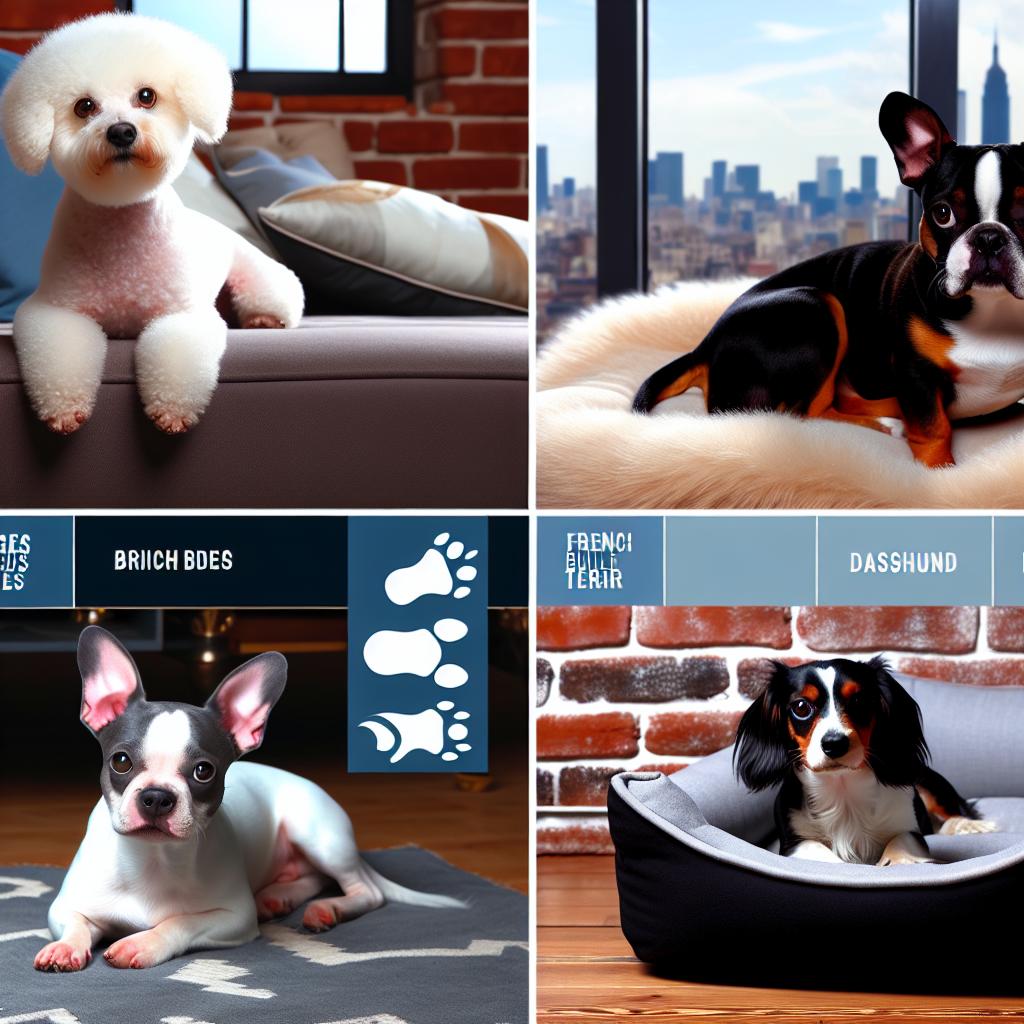
Living in an apartment often means limited space and close neighbors, which can affect the choice of a suitable dog breed. Contrary to popular belief, many dogs, regardless of size, can adapt well to apartment living if provided with appropriate mental and physical stimulation. Several factors must be considered when selecting a breed, including size, energy level, and temperament.
While smaller breeds are generally more suited for limited spaces, large breeds shouldn’t be excluded solely based on their size. What matters more is their activity level and how they handle being confined. Breeds that enjoy lounging and do not require vast spaces for exercise can be a good fit even if they are larger. Understanding how a dog utilizes space in an apartment is crucial, as a dog that moves actively and frequently may not fit comfortably in a smaller living area.
Moreover, larger dogs might surprisingly adapt better to small spaces if they have a calm disposition. It’s essential to remember that sufficient exercise via outdoor activities or walks can compensate for the lack of indoor space, making even a large dog content in an apartment setting.
Energy levels vary across breeds. Dogs with high energy levels often require more space and exercise, which is crucial for preventing undesirable behavior. Low to moderate energy breeds can be more adaptable to the constraints of apartment living. It’s important to ensure a dog receives adequate exercise outside, either with walks or activities, to maintain physical health and behavioral balance.
In an apartment environment, setting a routine for exercise can provide dogs with a sense of consistency. Activities like daily walks, playtime in a nearby park, or even indoor games can help manage their energy levels effectively. Interaction is key – dogs need avenues to release their energy constructively to prevent restlessness or anxiety, which might manifest in misbehavior or excessive noise.
Dogs with a calm and quiet demeanor are preferable in apartment settings where noise can easily disturb neighbors. Some breeds are prone to excessive barking or have high territorial instincts, which can be problematic. Therefore, selecting a breed known for calmness and lower noise levels can ease coexistence within shared living spaces.
The temperament of a dog not only influences their behavior but also affects how they interact with their environment and neighbors. A dog with a stable temperament is less likely to experience stress or anxiety due to various apartment-related stimuli, such as elevator noises or people passing by the door. This calm demeanor contributes positively to the overall atmosphere of apartment living.
Several dog breeds are particularly well-suited for apartment living due to their size, temperament, and exercise requirements. Here are a few examples:
– French Bulldog: Known for their quiet nature, French Bulldogs require minimal grooming and have moderate exercise needs, making them ideal for indoor living.
– Pug: Pugs are small, affectionate, and adapt well to confined spaces. Their exercise needs are moderate, and they thrive on companionship.
– Cavalier King Charles Spaniel: This breed is known for being adaptable, friendly, and less likely to bark excessively, making them a good choice for apartments.
– Greyhound: Surprisingly, Greyhounds are well-suited for apartments due to their calm and relaxed nature indoors. Although they are capable runners, they mostly enjoy lounging.
– Bichon Frise: This breed offers a friendly temperament and small size, which are beneficial in an enclosed environment. Their playful nature doesn’t require large amounts of space.
Before deciding on a breed, it’s crucial to comply with any apartment regulations regarding pets and consider potential allergies, lifestyle compatibility, and time availability for pet care. Prospective owners should also have a plan for the dog’s socialization, training, and healthcare.
Monitoring a dog’s grooming needs, dietary requirements, and regular vet visits are necessary aspects of maintaining their well-being. Each breed comes with specific care demands, which must align with the owner’s ability to provide for them. Additionally, it’s beneficial to create a pet-friendly environment within the apartment, such as designating certain areas for feeding, sleeping, and playing.
Training should not be overlooked, as a well-trained dog adjusts more effectively to apartment life. Basic obedience training and socializing with other pets can prevent behavioral issues, making the dog a well-integrated resident of the apartment community.
For more information on taking care of apartment dogs, consider exploring resources such as the ASPCA’s Dog Care Guide, which offers a wealth of tips for potential and new dog owners.
Selecting the right dog breed for apartment living requires careful consideration of various factors. Regardless of the breed chosen, responsible pet ownership involves meeting their exercise, socialization, and healthcare needs to ensure a harmonious living arrangement in a limited space. The goal is to find a balance between the dog’s needs and the constraints of apartment life, ensuring both owner and pet enjoy a fulfilling living experience. Understanding and catering to the specific needs of a dog can lead to a successful and rewarding companionship, even in the confines of an apartment.